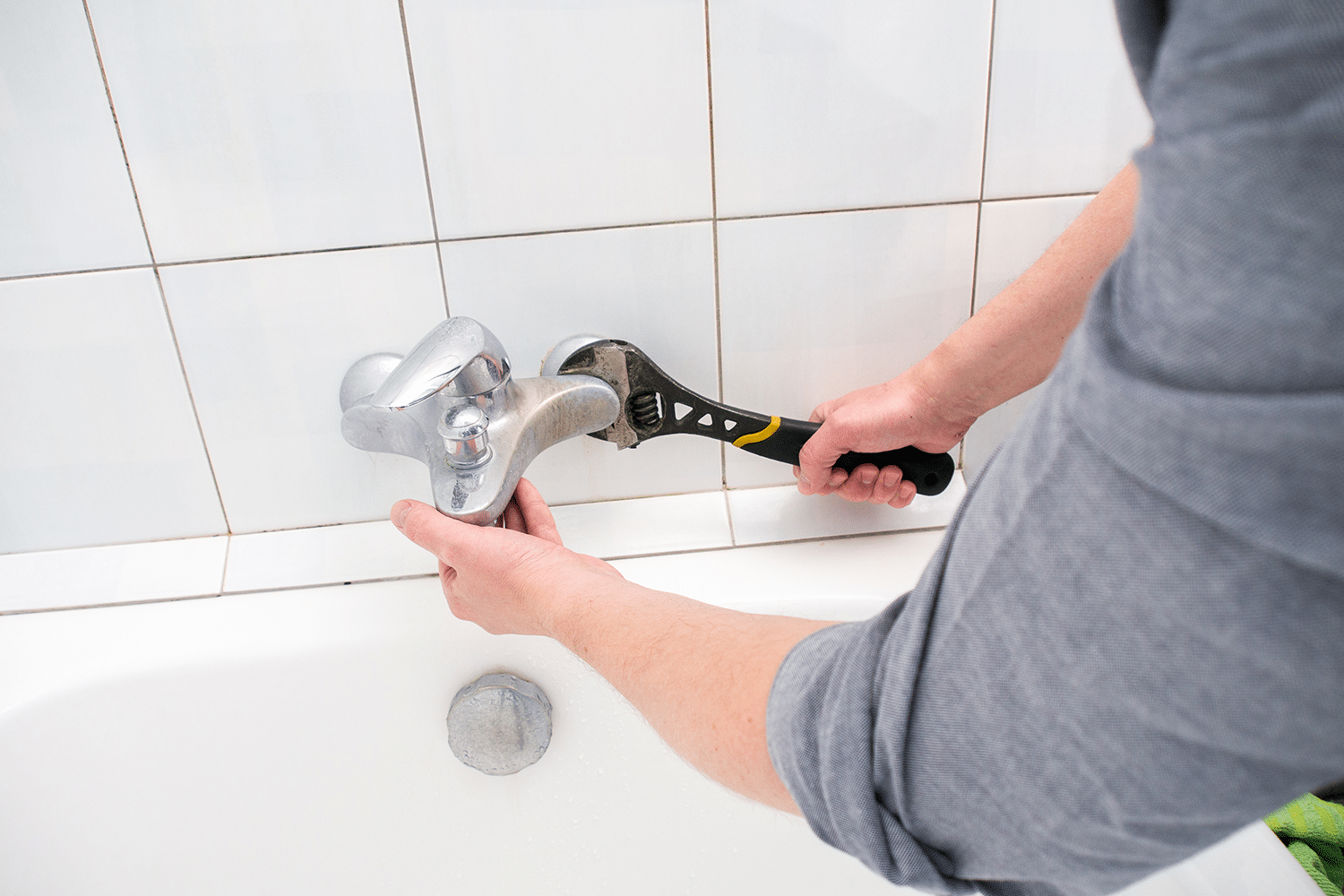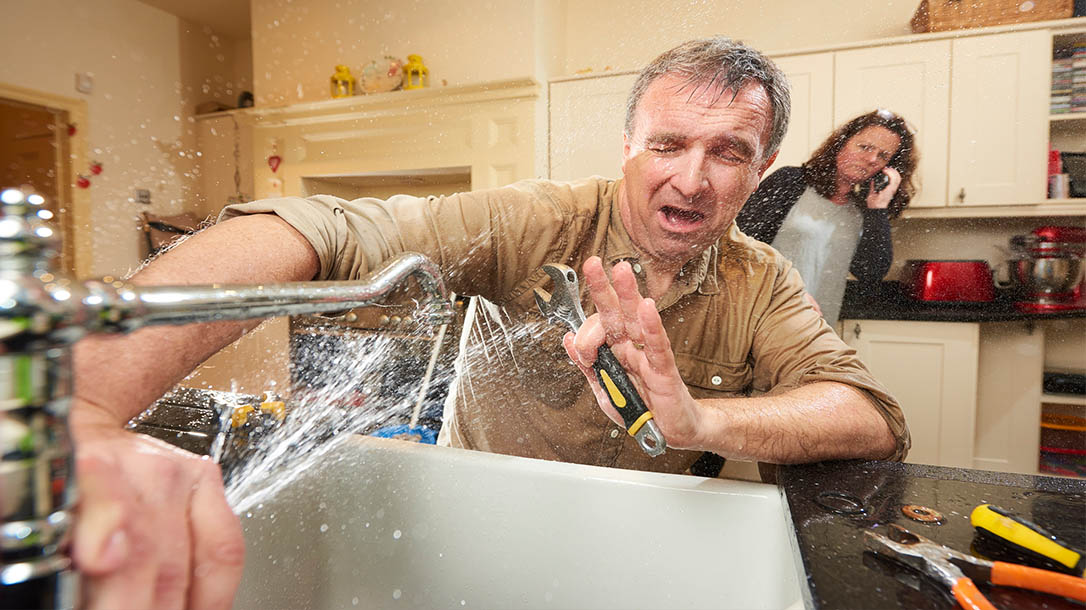Exploring the Relevance of Fixing a Leaking Faucet
Exploring the Relevance of Fixing a Leaking Faucet
Blog Article
Every person maintains their own individual theory on the subject of How to Fix a Dripping or Leaky Faucet .

Trickling faucets may feel like a minor trouble, yet their impact exceeds simply the annoyance of the noise. From drainage to sustaining unnecessary monetary prices and health dangers, overlooking a dripping faucet can result in different effects. In this article, we'll explore why it's vital to resolve this common home problem without delay and effectively.
Wastage of Water
Ecological Impact
Leaking faucets add dramatically to water wastefulness. According to the Epa (EPA), a solitary tap dripping at one drip per second can squander greater than 3,000 gallons of water per year. This not only strains water resources but likewise impacts environments and wild animals based on them.
Financial Expenses
Boosted Water Costs
Beyond the environmental impact, dripping faucets can inflate water costs considerably. The accumulated wastefulness with time converts right into higher energy expenditures, which can have been prevented with prompt repair services.
Possible Home Damage
In addition, long term dripping can bring about harm to components and surface areas bordering the faucet. Water build-up can create discoloration, rust, and also structural problems if left ignored, leading to additional repair work costs.
Health Issues
Mold and Mildew Growth
The continuous existence of wetness from a leaking tap develops a suitable environment for mold and mildew and mold development. These fungi not just endanger interior air high quality but likewise present wellness risks, especially for individuals with respiratory conditions or allergies.
Waterborne Diseases
Stationary water in trickling faucets can come to be a breeding place for microorganisms and various other microorganisms, increasing the danger of waterborne conditions. Pollutants such as Legionella microorganisms flourish in stagnant water, possibly bring about major health problems when consumed or inhaled.
DIY vs. Specialist Repair service
Advantages and disadvantages of Do It Yourself Repair Work
While some might attempt to take care of a dripping tap themselves, DIY repair work come with their very own collection of challenges. Without correct knowledge and devices, DIY attempts can exacerbate the concern or result in insufficient repairs, extending the trouble.
Benefits of Employing a Specialist Plumber
Employing a specialist plumber guarantees that the underlying source of the dripping faucet is addressed successfully. Plumbers have the knowledge and devices to diagnose and fix tap problems efficiently, saving time and lessening the risk of more damages.
Step-by-Step Guide to Taking Care Of a Dripping Tap
Devices Called for
Prior to attempting to deal with a leaking tap, collect the needed tools, consisting of a flexible wrench, screwdrivers, replacement parts (such as washers or cartridges), and plumber's tape.
Usual Faucet Issues and Their Solutions
Identify the sort of faucet and the particular issue triggering the drip. Typical issues include worn-out washers, corroded valve seats, or damaged O-rings. Describe manufacturer guidelines or on-line tutorials for step-by-step guidance on repair work.
Safety nets
Routine Maintenance Tips
To stop leaking faucets, do routine maintenance such as cleaning up aerators, inspecting for leaks, and replacing worn-out components without delay. Additionally, think about mounting water-saving tools or upgrading to more reliable fixtures.
Importance of Prompt Services
Addressing dripping faucets as soon as they're observed protects against additional water wastage and potential damages, eventually conserving both water and cash in the long run.
Influence On Residential Property Value
Assumption of Well-Maintained Building
Keeping a home in good condition, including resolving upkeep issues like trickling faucets, boosts its viewed worth and value amongst potential customers or renters.
Impact on Resale Value
Features with well-kept plumbing components, including taps, command greater resale values in the property market. Attending to trickling faucets can add to a positive impact throughout home inspections and settlements.
Ecological Obligation
Specific Contribution to Preservation
Taking duty for repairing leaking taps aligns with wider initiatives towards water conservation and environmental sustainability. Every person's activities collectively make a considerable influence on preserving valuable sources.
Lasting Living Practices
By focusing on prompt repair services and taking on water-saving habits, individuals contribute to sustainable living techniques that profit both existing and future generations.
Conclusion
Dealing with a leaking tap surpasses plain convenience; it's a vital step toward saving water, minimizing monetary prices, and guarding health and residential or commercial property. Whether with DIY repair work or professional support, acting to repair dripping faucets is a small yet impactful method to advertise liable stewardship of sources and add to a much healthier, a lot more sustainable future.
How to Fix a Leaky Faucet: Step-by-Step Repair Guide
A leaky faucet may seem like a simple annoyance, but if it's not fixed promptly, that leak could cost hundreds to potentially thousands. From water damage to mold, mildew, and high water bills, even a tiny leak can be catastrophic if left unattended. Damage like this can even affect the overall value of your home, so it's important to take the right approach for leaky faucet repair. You may need the help of a plumber in some cases, but we've got a few tips you can try on how to fix a leaky faucet before calling the pros.
Four Faucet Types
When you're learning how to fix a leaky faucet, the first step is knowing what kind of faucet you're working with! There are four common types.
Cartridge Faucets
Cartridge faucets come in one- or two-handled varieties. In one-handled cartridge faucets, hot and cold water combines in a single cartridge. In the two-handled versions, hot and cold water are controlled separately and mixed in the faucet.
Ball Faucets
Ball faucets have a single lever you push up and down to adjust the pressure and rotate to change the temperature. A slotted metal ball controls the amount of water allowed into the spout.
Compression Washer Faucets
They're the oldest type of faucet, but they're still used in many homes — especially older ones. Compression faucets have two separate handles that, when turned, raise or lower the washer that seals a water valve. This valve stops water from flowing through the faucet when it is turned off.
Disc Faucets
Disc faucets rarely need to be repaired due to their maintenance-free design. The water flow is controlled by two discs — the upper one raises and lowers against a fixed lower disc, creating a watertight seal. If your disc faucet starts leaking, you may need to replace the seals or clean residue buildup from the inlets.
Fixing a Leaky Faucet
Step 1: Turn Off the Water
Whether you're learning how to fix a leaky bathtub faucet or how to fix a leaky kitchen faucet, always turn off the water supply to your working area when you're fixing a leak. The last thing you want is a flood added to your list of things to fix.
Look for the shutoff valves below your sink or around the tub and turn them clockwise to stop the water flow. If your faucet doesn't have shutoff valves, you may need to turn off the water for the whole house. Check to make sure it's off by turning the faucet on. If nothing comes out, you're ready to start the repair.
Step 2: Take Apart the Faucet
How you disassemble your faucet depends on the type of fixture you have. You can use a flathead screwdriver to remove the caps on top of the handle or handles for cartridge and compression faucets. Inside, you should see handle screws. Unscrew these with a screwdriver to remove the handle.
Disc- and ball-style faucets will typically have an inlet screw near the handle, and removing that will reveal the interior of the faucet.
Detach the Valve Stem
For cartridge- and compression-style faucets, you'll see the inner valve stem or cartridge once you remove the faucet handles. If you have a compression faucet, unscrew the brass valve stem. If you have a cartridge faucet, pull out the cartridge. If your cartridge has been in place for a while, it may require some tools or extra force to remove it due to mineral deposits.
Examine and Replace Parts
Once you've removed the parts, check them out to confirm what needs to be replaced. You may see corroded rubber washers, O-rings, stems, or cartridges. On a ball-style faucet, check the seats and springs for damage.
If you need to repair a leaky disc faucet, check the inlet and seals on the lower disc.
Once you determine what parts must be replaced, visit your local hardware store. Bring the damaged parts with you to ensure you can purchase the correct components to replace them.
Clean Valves and Faucet Cavity
If you've removed a stem or cartridge, you may notice mineral buildup in the faucet's threads. Use white vinegar to clean the valve seat by soaking it for a few minutes, then scrub it away with a soft toothbrush and rinse with warm water. You can also clean the interior of the faucet in the same way.
Reassemble the Faucet
Once your faucet is cleaned and the required parts have been replaced, it's time to reassemble it. Put the pieces back together and slowly turn the water supply back on. Doing this slowly is crucial because too much initial water pressure can damage the new hardware you've just installed.
https://homewarranty.firstam.com/blog/how-to-fix-leaky-faucet

I'm certainly very fascinated with and I hope you appreciated the new blog post. Are you aware of another individual who is occupied with 4 Common Reasons for a Leaky Faucet? Please feel free to share it. Thanks for your time invested reading it.
Report this page